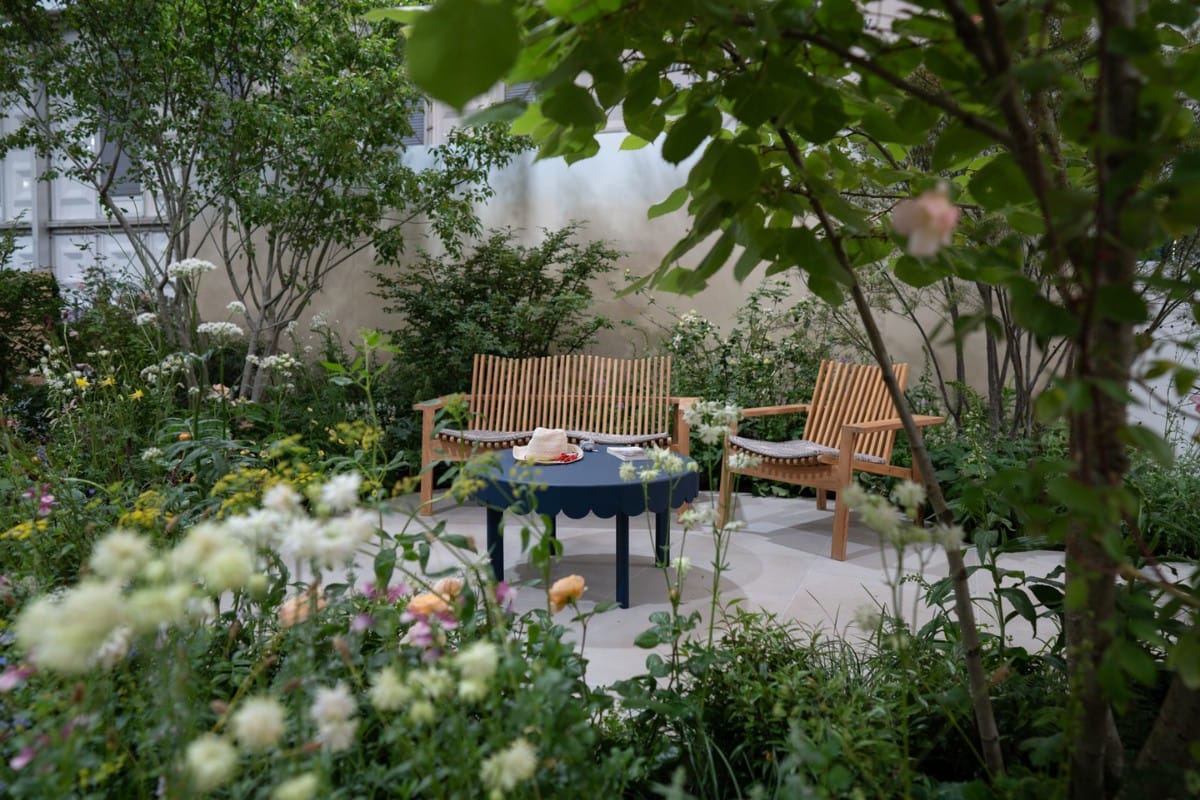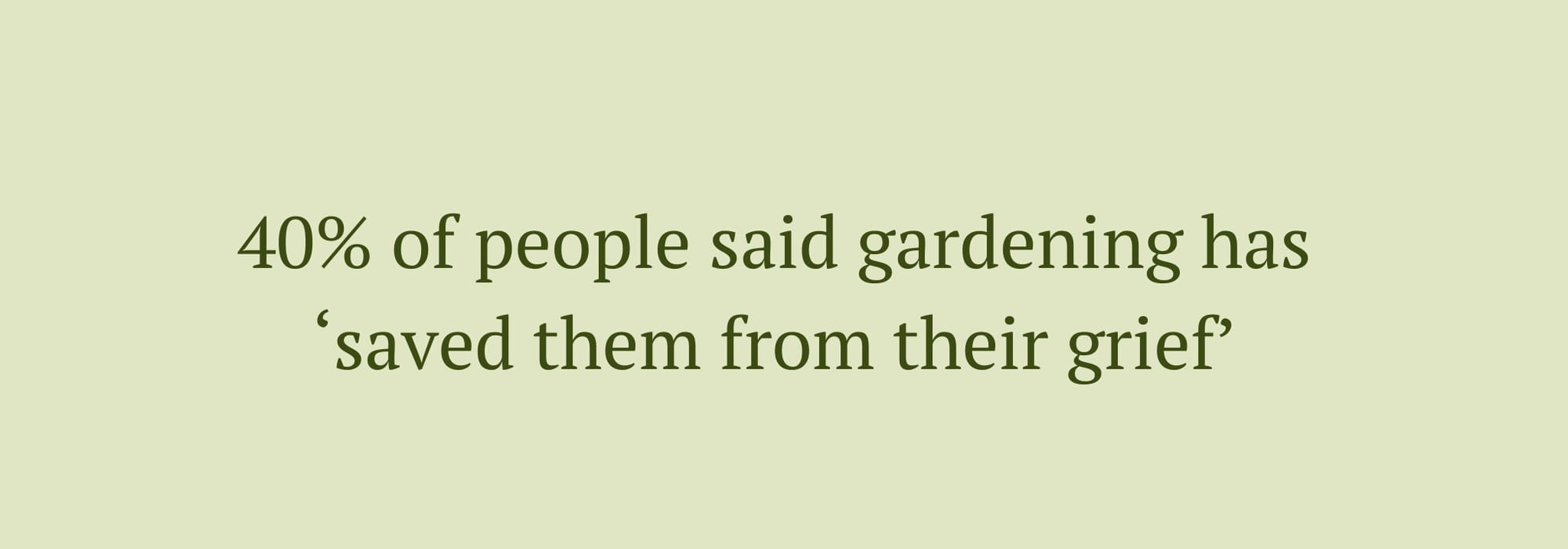From public memorial gardens to intimate home gardens, and the flowers we display in our homes, how can these seemingly simple spaces provide comfort, hope, and togetherness through life’s most challenging times?
In 1966, the Aberfan disaster took the lives of 116 children and 28 adults when a slag heap collapsed, causing a landslide onto a primary school and surrounding houses. In the wake of such horror, the personal and national grief that followed was devastating. The following year, in May 1967, Queen Elizabeth II visited the Welsh village, and planted a tree to mark the day. Today, a beautiful, powerful memorial garden, created on the site of the school, offers a space for quiet reflection. Following a £500,000 renovation some years ago, the chair of the Aberfan Memorial Charity spoke to a crowd of 200 people, saying that many people found that visiting the cemetery was too painful, but the garden offered a tranquil place to pause and reflect.
More recently, in 2021, the London Blossom Garden opened to commemorate those who lost their lives to the Covid-19 pandemic. Created in collaboration with local residents and community groups, the vision for the garden is that it will become a living memorial, and one which also recognises how important green spaces became to so many people during that difficult time.
These gardens are just two examples of countless numbers across the country. Memorial gardens are common in towns, cities, and villages, often marking inexplicably difficult shared losses. The metaphor here is plain to see, but still worth saying: even in times of loss, life, beauty, and joy can be nurtured and continued.
But gardens and gardening can also be an important pillar in personal grief. In a survey of more than 1,000 bereaved people, bereavement charity Sue Ryder found that 40% said gardening has ‘saved them from their grief’. A further 51% said that gardening helps to keep their loved one’s memory alive, and 56% said it provides a sense of routine and purpose while grieving.
“These activities can help you feel closer to them and provide moments of comfort and relief from the intense loneliness and overwhelming sense of loss,” says counsellor Valerie Hutchinson, when considering why this link may exist. “In time, these hobbies can bring longer periods of peace, and potentially become a passion that helps you move forward in a world that feels unknown and lonely. This can open new doors to connection and friendships that you might not have considered before.”
Earlier this year, a lot of these ideas were planted in a beautiful garden at the RHS Chelsea Flower Show. A collaboration between Sue Ryder and award-winning designer Katherine Holland, the Grief Kind garden was awarded a gold medal by the judges.

Katherine says the garden was inspired by Sue Ryder’s Grief Kind spaces – community drop-in sessions that provide an opportunity for people who have been bereaved to share their feelings. She explains that she was keen to take these conversations around grief outside.
“Common themes that arose during my research were the need for a space that gave you a sense of calm, felt safe, and also had colour,” Katherine says. “I selected a planting palette that had colour to it, but transitioned delicately so that there wasn’t a dominant colour, and as a whole the garden was restful to view. Some beautiful specimen trees were included to give height and overhead interest – including Acer ginnala, which has wonderful mottled grey stems, beautiful seed pods, and autumn colour, and Rhamnus (frangula alnus) aspleniifolia, which has filigree-like foliage and dainty white flowers in spring.

“As part of planning the garden, I also had the opportunity to speak to an in-patient at Sue Ryder St John’s Hospice, who had been a keen gardener. He spoke passionately about things that could be considered for the garden, and was keen to play a part in the process to develop a garden that his family might make use of.”
That patient was Norman Ward.
“He had two allotments, one was fruit trees, such as apples and plums, and the other was vegetables,” says Cassie, Norman’s daughter. “He liked to grow anything unusual or challenging – yellow courgettes, asparagus, tricky broccoli! When he retired, and knew he was going to be living a lower-paced lifestyle, he took on the allotments as a way of keeping himself active.
“When dad was in the hospice, the garden designer came to visit him,” she continues. “The hospice staff felt it would be good for him to be involved, and good for the garden, too. He had conversations with Katherine about what he felt would be good to include in the garden for someone who was grieving.”
Cassie recalls how passionate Norman became about the garden. It also became a more personal project for Katherine.
“I struggled with grief during the second lockdown in January 2021, and, at times, felt quite isolated, despite having good support from family and friends,” Katherine says. “The garden has been designed to be the space that I would have liked to have benefitted from, where I could have spoken to others about my grief and the different thoughts and emotions I was feeling. I wanted the garden to feel safe.”
“It was really lovely to see the garden,” says Cassie, reflecting on visiting it in person at the RHS Chelsea Flower Show. “The most amazing thing for me – which was quite serendipitous – is that I crochet, and Katherine had left some crochet bits of her mother’s on the table in the garden (a crochet hook and a mini ball of wool). It felt like a sign.
“Dad would have loved the garden, and he would have been so proud. He liked to shout things from the rooftops, so he would have been telling everyone if he was here, and he would have loved that the garden is now at Sue Ryder St John’s Hospice. That’s the saddest thing for me – that he won’t ever get the chance to see what he contributed to, because I know how proud he would have been.”
That day, the garden provided solace for all those who visited, but, beyond that, it is a testament to this shared understanding that being in nature can be hugely healing during impossibly hard times.

“Gardening, in particular, can be a great tool for coping with grief,” counsellor Valerie says. “Attending to plants and flowers creates a sense of connection to nature and the cycle of life. It can be a way to honour the memory of your loved one, particularly if the plants or flowers were very special to them. Watching something grow can provide both a metaphor for healing, and a practical way to experience renewal and hope, and marks the passage of time that has passed.”
In public and private places, on a grand scale or in the flowers we place in vases in our homes, growing through grief creates a living memory of those we have lost, and offers comfort, and an opportunity for reflection, as we take the next steps forward.
Garden photography | Maria Savoskula, Katherine’s portrait | John Campbel


Comments